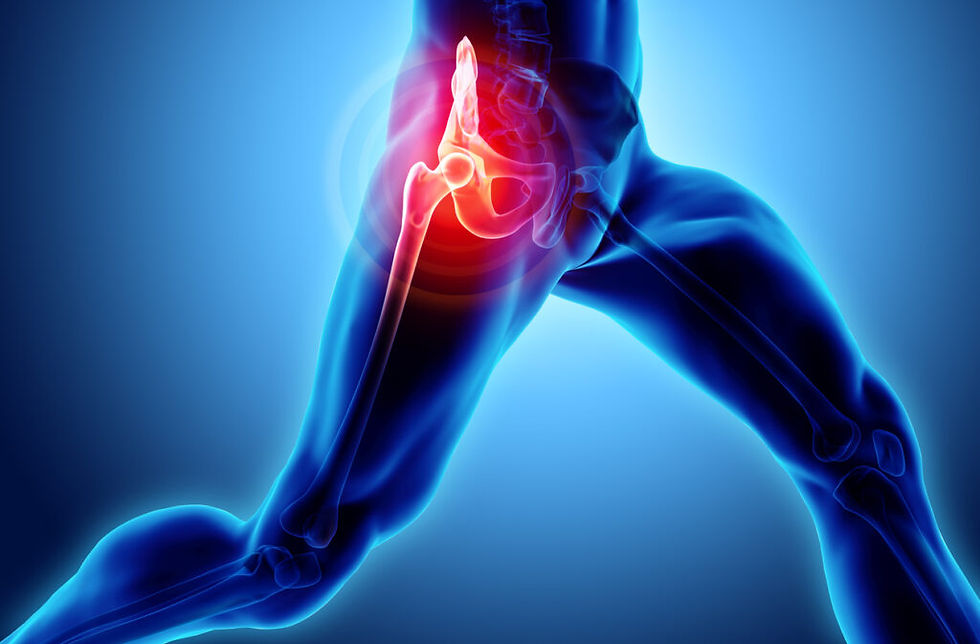Everything You Need to Know About Sciatica Pain & How to Relieve It
- Sinsinpas

- Mar 2, 2023
- 4 min read
If you’re suffering from sciatic pain, it’s important to know that you’re not alone. In fact, it’s reported that around 40% of people in the U.S. will suffer from sciatica pain at some point in their lifetimes. Whether you deal with frequent sciatica or just once in a while, there are relief options for you. Keep reading to learn all about what sciatic pain is, who is affected by it, and how you can relieve it at home!
What is Sciatic Pain?

The term ‘sciatica’ refers to pain that is felt along the sciatic nerve. The sciatic nerve is the longest nerve in your body and travels from the lower back down through the hips, butt, and down each leg. If you’ve ever felt a pain radiating from your lower back down through one or both of your legs, chances are you’ve suffered from sciatica. Sciatic pain can feel like a mild ache or a very sharp, shooting pain. Some people also report feeling a tingling or numbness in the legs or feet.
Sciatic pain can be caused by a recent injury or the pinching of the sciatic nerve. People who deal with slipped herniated disks will be familiar with sciatica as that is a major cause of the pain. Typically, most sciatic pain will resolve itself within a few weeks but you should reach out to your doctor if a mild case persists beyond that timeframe or you’re feeling extreme numbness in any part of your body.
Who is Affected By Sciatica Pain?
To put things simply, everyone and anyone can deal with sciatica. No matter how old you are or how good your health is, you could deal with sciatic nerve pain. That said, there are some lifestyle and health factors that could put you at a higher risk.
1. If you work at a desk or are a homebody:

Sitting down for extended periods of time (whether it’s at a desk or on your couch) can put you at a higher risk for sciatica. This is because sitting puts pressure directly on the sciatic nerve–especially if your posture isn’t the best.
2. If you are 30 years or older:

It’s no secret that our spinal disks and tissue can start to break down with age. We’re also more likely to get injured as we age which can also cause issues for the sciatic nerve.
3. If you’re an avid walker or runner:

Being active is super important to stay healthy but walking or running long distances repeatedly can cause some issues for the spine. This is because the movement of walking and running puts strain on a muscle in the bottocks region. When this muscle contracts and becomes too tight, it irritates the sciatic nerve causing pain.
4. If you’re pregnant:

As if pregnant women don’t already have enough to deal with, they also may suffer from sciatica! This is because of shifts of the baby’s position in the womb as well as fluctuations with hormone levels. Most sciatic pain is reported in the second and third trimesters.
5. If you have diabetes:

People who suffer from diabetes have a higher chance of dealing with frequent sciatic pain as the condition increases the chance of nerve damage.
6. If you smoke:

It shouldn’t come as a shock that nicotine is bad for us, but did you know it can actually weaken our bones and damage our spinal tissue? This is why smokers are at an increased risk for sciatica.
7. If you have a weak core:

The stronger your core muscles, the more support your back will have. This means that if you exercise your core often, your chances of dealing with sciatic pain are reduced.
8. If your job requires heavy lifting:

While a sedentary life can cause sciatica, so can lifting heavy things and twisting the spine frequently. This constant motion can irritate the spinal root and cause pain.
Ways to Relieve Sciatica Pain
Some sciatic pain can truly feel debilitating but it’s important to remember that there are at-home remedies that can help ease your pain and reduce the risk of future sciatica.
Stay Active

Being active often is the best thing you can do to avoid sciatic pain. Staying active strengthens your core muscles to support your back, lowers your risk for future injuries, and gets your body moving. Sitting down for long periods of time can make your sciatic pain flare up so it’s important to stand up and get moving often. Yoga is a really great option for low-impact exercise. It strengthens your core and will help you improve your posture.
Consider Seeing a Physical Therapist
If you suffer from regular sciatica, it won’t hurt to seek out a physical therapist. A physical therapist will help tailor your sessions to strengthen the muscles in your core and lower back to reduce the risk of injury. They’ll also be able to help you correct your posture in a way that feels good for your back.
Try Acupuncture

Acupuncture may seem like a foreign concept to many people, but it’s actually been found to be amazing for relieving back pain! For it to work, you need to find a licensed acupuncture practitioner and go for several sessions.
Get Massages

Who can say no to regular massages?! Massages help to relax tense muscles and get the blood flowing (which can encourage injuries to heal faster.) Plus, massages relax the mind which lowers stress and pain levels!
Apply a Cool and Hot Patch

Hot and cold therapy is one of the best ways to relieve sciatic from home. Cool temperatures can help reduce inflammation while heat relaxes tense muscles. Our AREX Cool & Hot Pain Relieving Patch is the perfect option for people suffering from sciatica. It’s extremely easy to apply and can be worn for whatever your day has in store. The heating and cooling effects are long-lasting so you can stick it on and forget about it. We also offer a large size of the AREX Patches which are ideal for lower back pain. Keep them in your desk at the office, in your car, or at home for pain relief wherever you are!






Comments